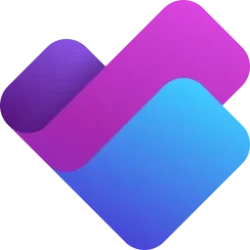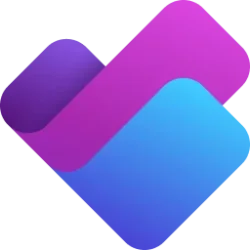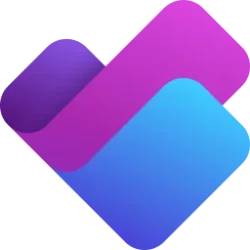Planner Blog:
Today, we are announcing the transition to Planner, which aims to provide a unified work management experience through a modern work stack integrating Project for the web, To Do, and Planner. In August 2025, we will retire Project for the web, as well as the Project and Roadmap apps in Microsoft Teams. Users will be redirected to Planner for the web and Planner in Teams as Project for the web becomes Planner.
Streamlined tools with a focus on innovation and user experience
Previously, Project for the web, Project in Teams, and Roadmap in Teams operated as separate endpoints from Planner. Since Planner for the web and Planner in Teams include the same premium plans as Project for the web, we are consolidating our endpoints to ease confusion. Additionally, Planner integrates basic plans—those created with a Microsoft 365 E3 or E5 license—into a single solution. By unifying our platforms and capabilities, we’ve created an integrated experience within one app, allowing users to seamlessly access both premium and basic plans with a premium plan license for an improved work management experience. This transition is the next step in delivering the experience announced at Microsoft Ignite 2023.No migration or change in licensing is required—all plans previously created in Project for the web are accessible in both Planner for the web and Planner in Teams. With a premium license, Planner provides access to familiar capabilities such as basic plans, along with premium features like Goals, Sprints, Task History, Advanced Dependencies with lead and lag, Baselines, and more. Additionally, it includes our next-generation AI-powered work management tools, including Copilot and the Project Manager agent.
Transitioning to Planner (redirect from Project for the web and Project and Roadmap apps in August 2025)
- Starting in early August, for users who have not already transitioned, when launching Project for the web or Roadmap for the web, users will see a page redirecting them to open Planner for the web Microsoft Planner; you may also use Planner in Teams.
- Existing Project and Roadmap tabs in Teams will no longer open the associated projects but will inform users to re-pin their tab using the Planner tab for Teams.
- The Project tab and Roadmap tab apps are no longer available in the Teams app store.
- Users can manage and create premium plans in Planner, like their current usage in Project for the web.
- The Project Power App will retain its user experience and be renamed “Planner Power App.”
Benefits of using Planner, plus new capabilities
Customers find that having too many work management apps can reduce collaboration, miss opportunities, and lower productivity. Planner addresses this by offering one work management solution:- A consolidated view of all tasks in “My Tasks” and “My Day.”
- Access to premium and basic plans and features, from task management to enterprise-level capabilities with low code/no code extensibility.
- AI capabilities to automate and boost productivity.
- Enterprise-grade security at every level.
- Collaboration between humans and AI for efficient team project management.
Between late April and early September 2025, we will introduce the following functionalities to Planner:
- Planner rollout to Government Cloud Community (GCC) High.
- Users will be able view and manage non-default environment (named organization) plans directly in Planner.
- The Project Power App will be renamed “Planner Power App” (buttons will be updated accordingly).
- Project Microsoft 365 admin center settings will migrate to the Planner page.
- Tenants with premium licenses with no Microsoft 365 license will gain access to basic plan functionality in Planner.
- Roadmaps: Planner will not support opening Roadmaps. Instead, users can use the Planner Portfolio feature to re-create their existing Roadmaps as Portfolios. Note that Portfolios in Planner will not support adding rows for Azure DevOps or Project Online. Roadmap data will remain available in Dataverse.
- Import .mpp files: The ability to import a plan created in Project desktop is not available in Planner but can be done through Planner (formerly Project) Power Apps/Accelerator. Learn how to move your project from Project desktop to Planner Power Apps.
- Roadmap tab in Teams: pin Portfolios as a tab in Teams.
How can you prepare for the transition?
To ensure a smooth transition to Planner, we recommend that administrators notify users and update any internal documentation to reflect the changes. This retirement will happen automatically in August with no admin action required before or after the rollout. We recommend that you migrate existing Roadmap data to Portfolios in Planner before the redirect begins; and to proactively re-pin your Project in Teams tabs using the Planner in Teams tabs. Supporting resources are available, including detailed guidelines on how to re-create a Portfolio in Planner, how to create a new plan with Copilot in Planner (public preview), and how to access and use the Project Manager agent to generate tasks for a plan and assign Project Manager to tasks for execution. We also recommend visiting the Microsoft Planner adoption page for additional helpful resources and information.Resources
- Check out the “Transitioning to Planner and retiring Project for the web” section in our Frequently asked questions about Microsoft Planner article.
- Visit the Planner Adoption page.
- Visit the Microsoft 365 Roadmap for feature descriptions and estimated release dates.
- Stay up to date on the latest announcements from the Planner and Project team by visiting the Planner Blog and Project Blog.
- Visit the Planner help & learning page to learn more about existing capabilities in Planner.
- Watch Planner demos for inspiration on how to get the most out of Planner in Microsoft Teams.
Source:

Transitioning to Microsoft Planner and retiring Microsoft Project for the web | Microsoft Community Hub
Today, we are announcing the transition to Planner, which aims to provide a unified work management experience through a modern work stack integrating...










